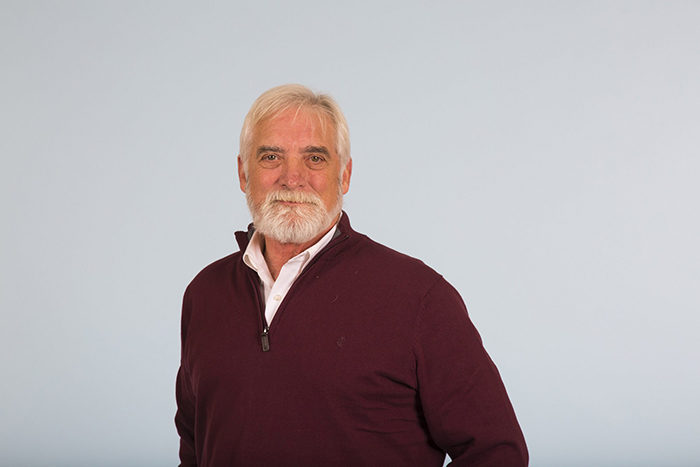About 2.5% of people in the United States have heart valve disease, and it is more common in older adults. According to Dr. Babaliaros, “About 5% of patients over 80 will have aortic stenosis,” a narrowing of the aortic valve. “That’s one in 20 people. If we live long enough, we’ll all have some degree of aortic stenosis.”
What Causes Heart Valve Disease?
When people are born with heart valve disease, it’s called a congenital heart condition. Others may develop the disease as adults, usually on the left side of their heart—the aortic and mitral valves. Common causes of valve disease include:
- Calcium build-up around the heart valve
- Inflammation of the heart’s inner lining (endocarditis)
- Narrowing and hardening of the arteries (atherosclerosis)
- Rheumatic fever from untreated strep throat or scarlet fever
How Is Heart Valve Disease Diagnosed?
Most of the time, a doctor will hear a heart murmur, an unusual-sounding heartbeat, with a stethoscope. “A murmur is not a diagnosis, and it doesn’t tell you what is wrong,” says Dr. Greenbaum. “‘Innocent murmurs’ don’t cause problems. But some are a sign that a valve leaks or is stuck.”
If a heart murmur sounds concerning, the doctor may suggest an echocardiogram. These non-invasive imaging tests use sound waves to create a picture of the heart. “This is a no-risk, low-cost way to get a lot more information on what is causing the heart murmur and see the effect on your heart muscle,” says Dr. Babaliaros.
Some women may also discover heart valve disease while pregnant. “Sometimes it can come to light during pregnancy because it puts additional stress on the body,” notes Dr. Babaliaros. “Pregnancy can be associated with some degree of breathlessness, which can increase with aortic valve disease.”
What Are the Symptoms of Heart Valve Disease?
Not everyone with heart valve disease experiences symptoms. As people get older, they are more likely to feel them. And the signs of heart valve disease can vary depending on the affected valve.
Some common symptoms include:
- Chest pain—often with activity
- Extreme tiredness
- Fainting or dizziness
- Fast, fluttering heartbeats
- Shortness of breath
- Swollen feet or ankles
If you notice any of these symptoms, tell your primary care doctor right away.
How Do You Treat Heart Valve Disease?
A doctor will consider each patient’s diagnosis and severity to create the best treatment plan. Emory’s interventional cardiologists and cardiac surgeons offer over two decades of experience in minimally invasive techniques, including TAVR and robotic valve surgery. These approaches allow patients to heal faster and avoid many complications associated with traditional open-heart surgery.
If the heart valve disease is mild, your doctor may help you manage it with medication and healthy behaviors. If the valve is more seriously affected, your doctor may recommend surgery to repair or replace the valve.
The timing of treatment varies depending on diagnosis, too. If someone has narrowed valves, a doctor may wait to replace the valve until the patient experiences symptoms. If someone has leaky valves, a doctor will monitor them closely and replace the valve before the patient has any symptoms.
How Do Doctors Replace a Heart Valve?
Our experts offer many minimally invasive options and advanced techniques at Emory Healthcare. Physicians can use catheters for many valve replacement procedures instead of open-chest surgery. A catheter is a thin, flexible tube put into an artery through a small cut in the chest.
When Dr. Greenbaum first saw catheters during medical school, it reminded him of playing video games as a kid. “The first day that I worked with a catheter, I knew it was my future,” he recalls. A camera on the catheter projects an image on a screen. Dr. Greenbaum can see inside the body to navigate and precisely replace heart valves.
During a TAVR procedure, cardiologists and surgeons work together to replace the aortic valve via catheters. Initially created to treat high-risk patients, TAVR is a safe option for many types of patients. “We’ve shown that for aortic stenosis, even in low-risk patients, TAVR is now safer than and superior to open-chest surgery,” says Dr. Greenbaum.
Dr. Babaliaros describes how the team has become so skilled at performing these procedures they can anticipate what each patient might need. When they first pioneered TAVR, it had so many unknowns, “it used to be like sending a rocket to space,” he recalls. “But now, these procedures are well-scripted. We know exactly where to put the valve, what size valve we need and which patients might have a problem,” so they can prepare accordingly.
Where Can I Find the Right Treatment for Me?
Patients with heart valve disease have every solution available to them at the Structural Heart & Valve Center at Emory Healthcare. Experts like Drs. Babaliaros and Greenbaum offer unparalleled expertise as pioneers for innovative procedures and complex cases. Together, our team strives to find the right solution for each patient.
We can also help patients who have been told they’re out of options. Drs. Babaliaros and Greenbaum are creating brand-new therapies with their unique National Institutes of Health collaboration. A recent innovation is transcatheter electrosurgery, which they pioneered to help a patient with hypertrophic cardiomyopathy (overly large and stiff heart muscle).




